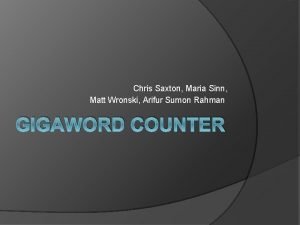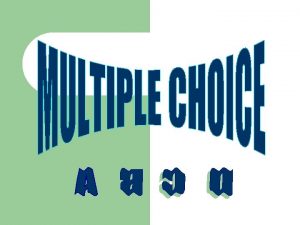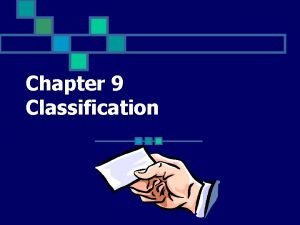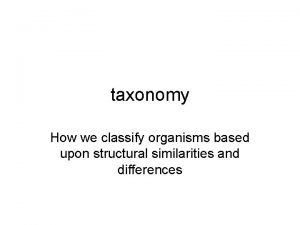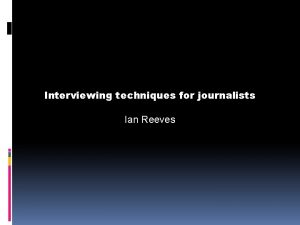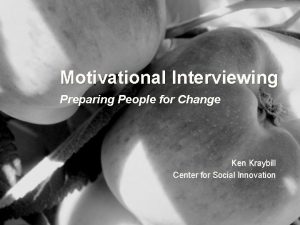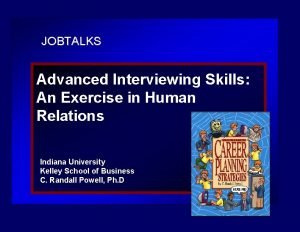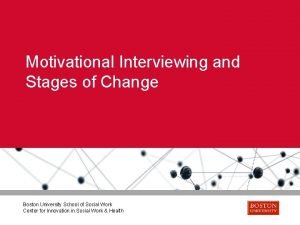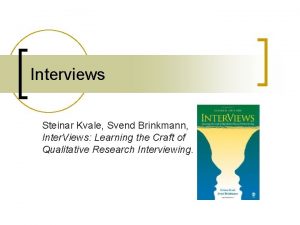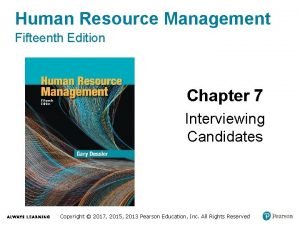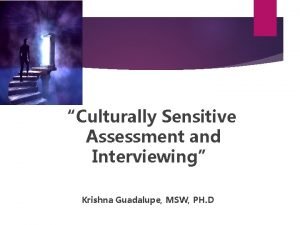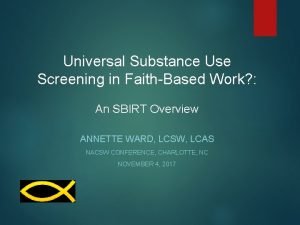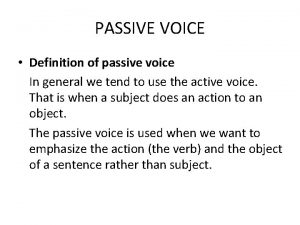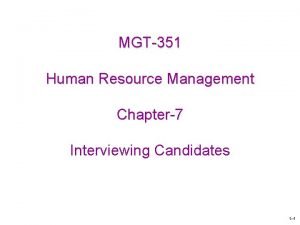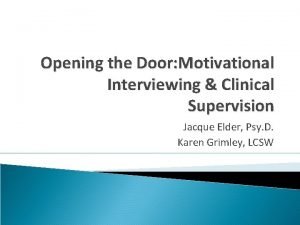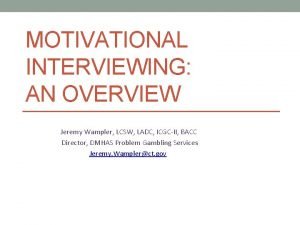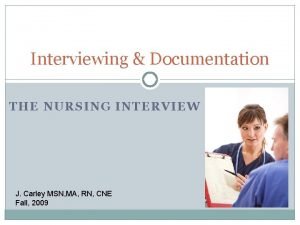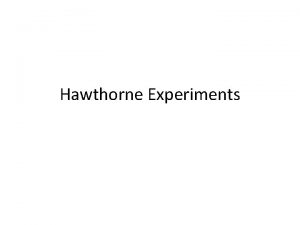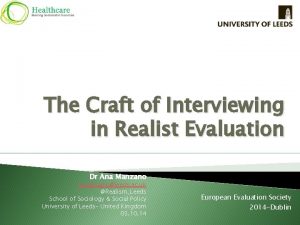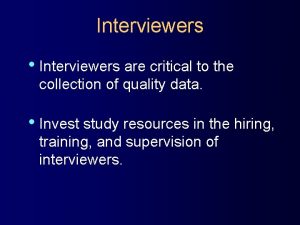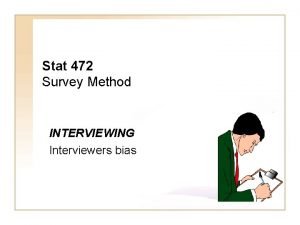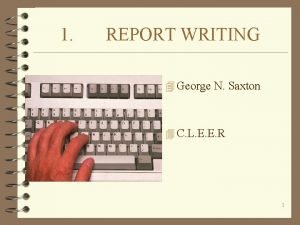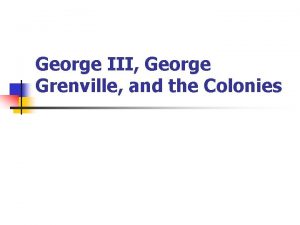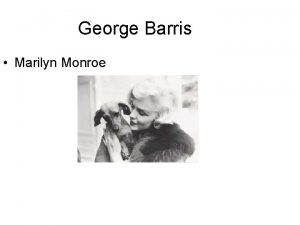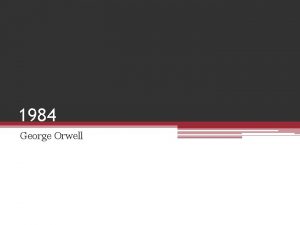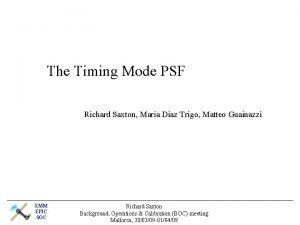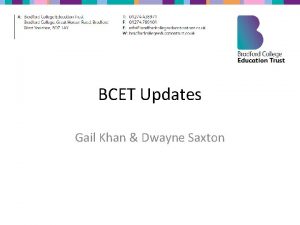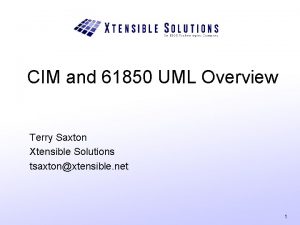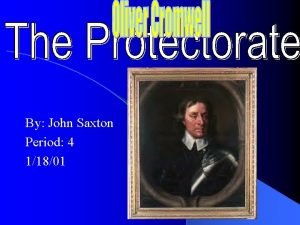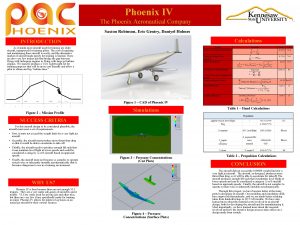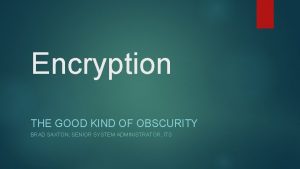Interviewing George N Saxton 1 Interviewing Most Interviewers



















































- Slides: 51

Interviewing George N. Saxton 1

Interviewing Most Interviewers Learn by Trial and Error and by Watching Others. 2

Interviewing Is a Specialized Skill Learned by Training and Experience. 3

Interviewing l. Honesty, integrity, objectivity 4

Interviewing l. Seeks only the truth 5

Interviewing l. Ability to establish rapport 6

Interviewing l. The ability to listen and evaluate responses. 7

Interviewing l. Ability to maintain self -control and not get emotionally involved. 8

Interviewing l Interview. – The questioning of an individual believed to possess information or knowledge of interest to an investigator. The subject is willing. 9

Interviewing l Interrogation. – The questioning of an individual believed to possess information or knowledge of interest to an investigator who is reluctant to make a full disclosure of information. 10

Background Information l Know as much as possible about the violation, the person being interviewed, and yourself. 11

Conducting an Interview When Should I conduct the Interview? l Sooner is better in most cases however certain issues can have an effect: l Availability of the Subject & Interviewer l Legal Maneuvering l Information Collecting Efforts l Preparation of the Interviewer l Securing the proper place for the interview 12

Conducting an Interview Where Should I conduct the Interview? l Consider Privacy: l MAJOR issue l provide a sense of confidentiality / safety l control noise as much as possible l help the subject feel comfortable 13

Conducting an Interview Where Should I conduct the Interview? l l l Avoid “Police-ish” Rooms or Offices select a room without: large obvious locks on the door metal reinforced glass in windows shelves of legal books or regulations impediments to the exit covered, mirrored or draped areas that might cause one to think a third party is watching 14

Conducting an Interview Where Should I conduct the Interview? l Minimize l l l Distractions: no pictures, posters, plaques, ornaments walls and ceiling should be painted in a neutral color with no distinctive pattern or design no pencils, clips, papers etc within reach of subject do not allow access to purses, back packs during the interview. no access to cell phones, pagers no access to room by anyone during the interview 15

Conducting an Interview Where Should I conduct the Interview? l Select an area with proper lighting: l light should illuminate the subject’s face well but not be glaring. l interviewer must be able to see the subject’s face at all times. l Interviewer’s face should be clearly visible to the subject at all times. 16

Conducting an Interview Where Should I conduct the Interview? l l l Chair Placement: interviewer and subject should be 4 -5 feet apart, facing each other directly, without anything between them. Chairs should be standard office type with straight backs. Chair heights should be identical. If an interpreter is used they should be next to the interviewer and at an angle to the subject. 17

Are you the right person to do the Interview? l l l l Just because it is your case does not always mean you should do the interview: avoid ownership and turf issues The right person has: a solid understanding of human nature patience (lots of it) experience and is well trained in doing interviews expertise in the legal parameters for their agency 18

Are you legally, mentally & emotionally prepared for the Interview? Do you have authority to conduct this interview? l Is any kind of warning to the subject required by policy or law? Is there a particular right or privilege to which the subject is entitled? l Have you reviewed the file and do you know it in detail? l Are you prepared to deal with any unpleasant or offensive conduct or information in the interview? l 19

The Dynamics of the Interview l Avoid creating the impression of an interview seeking an admission l Keep Pencil & Paper out of sight l Dress less formally unless otherwise indicated l Avoid “charging” words like illegal, violation, steal, lie etc. l Have someone bring the subject to you (? ) l Be aware of the subject’ personal space l Stay seated, don’t pace 20

Time and Location l Interview as soon as possible after the incident. 21

Separate Witnesses l Separate witnesses immediately and always interview in private. 22

Separating Witnesses l Separating witnesses will: – Reduce confusion. – Protect the integrity of an eyewitness account. – Reduce the possibility of a rehearsed statement or joint alibi. 23

Introduction and Identification l Properly identify yourself and show your credentials. 24

Interviewing l Obtain personal identification of interviewee. 25

Personal Information l Obtain: – Full name and nickname – Address – Date of birth – Social security number – Employment – Occupation – Telephone numbers – Other information? 26

Interviewing l Set the mood. Be friendly – or at least professional. 27

Interviewing l Establish normal, friendly communications. Try to calm the subject. 28

Plan the Interview l l l Nature of complaint Law/regulation Individuals involved Documents/records Other resources 29

Interviewing l Be general, not specific 30

Questioning Techniques l What happened? l When did it happen? l Where did it happen? l Why did it happen? l How did it happen? l Who was involved? 31

Questioning Techniques l Avoid “yes” and “no” questions: – Did you see what happened? – Didn’t you see the drugs? – You were not in the office, were you? – Did you enter the office? – Did you drink a whole lot that night? – Did he touch you there? 32

Questioning Techniques l Listen carefully for vague, misleading and inconsistent answers. Have them repeat or rephrase their answers. 33

Questioning Techniques l Begin with non-hostile questions. l Develop facts in order of occurrence. l Keep questions simple and clear. l Give the subject time to answer the question. l Keep the subject talking. 34

Questioning Techniques l Question how the information was obtained: – Seeing – Hearing – Touching – Smelling – Tasting 35

Questioning Techniques l Evaluate the reliability of the witness. – Reputation. – Ability to remember. – Personal interest. – Age. 36

Note Taking l Take notes unless note taking inhibits the subject 37

Note Taking l Listen to initial information. l Take accurate, detailed notes. l Note others present during the interview. l Note date, time, location and ending time of the interview. 38

Note Taking l Tape recorders or video cameras: – Legal issues – Practical issues 39

Concluding the Interview l Summarize and verify the information. – Review information for accuracy and completeness. – Ask witness to verify information. 40

Concluding the Interview l “Is there anything else you need to add to this statement? ” l “Is there anything I haven’t asked you? ” l Express your appreciation and re-establish rapport. 41

Concluding the Interview l Let the interviewee know how to contact you if they think of anything else. l Make sure you know how to contact them if you have further questions. 42

Interrogation l Elicit full disclosure of the facts by: – Inspiring confidence – Breaking down silence 43

Interrogation l Open lines of communication by establishing rapport. 44

Interrogation l Avoid appearance or words of authority. l Avoid negative words about the incident. l Show concern for the subject’s well-being. l Open with non-threatening communication. 45

Interrogation l Create an image of a “respected figure. ” – A. professional attitude – B. sympathy – C. understanding – D. firmness – E. fairness 46

Interrogation l Plan the interrogation. – Have a goal of complete disclosure. – Identify first admission – Be persistent and patient. 47

Interrogation l Rationalization Techniques – Minimize the incident – Exaggerate what the subject did not do. – Shift the blame. 48

Interrogation l “So what” techniques will assist in rationalizing his or her actions. l “So what, everybody does it. ” l “So what, you had no choice. ” l “So what, who cares? ” 49

Interrogation l Creating the verbal vacuum. – “I know that you did it and you know that you did it. If you are going to lie to me, I would just as soon you didn’t say anything at all. ” 50

Case Review l How would you describe the violation? l What is your goal? l What might your “first admission? ” l What would you emphasize? l What would you minimize? 51
 Ed saxton
Ed saxton Maria sinn
Maria sinn Differences between george washington and king george iii
Differences between george washington and king george iii George washington vs king george iii venn diagram
George washington vs king george iii venn diagram Of mice and men is set in which decade? *
Of mice and men is set in which decade? * سsh
سsh In the name of god, most gracious, most merciful prayer
In the name of god, most gracious, most merciful prayer Most general to most specific classification
Most general to most specific classification In the name of god most gracious prayer
In the name of god most gracious prayer Guddi baji
Guddi baji In the name of allah, the beneficent, the merciful
In the name of allah, the beneficent, the merciful In the name of allah, the most gracious, the most merciful
In the name of allah, the most gracious, the most merciful In the name of allah the most beneficent the most merciful
In the name of allah the most beneficent the most merciful Allah the most beneficent
Allah the most beneficent This is the study of grouping and naming organisms
This is the study of grouping and naming organisms The most gracious
The most gracious The most
The most The arrangement chapter 9
The arrangement chapter 9 Most general to most specific classification
Most general to most specific classification Aqeedah in islam
Aqeedah in islam Interview techniques for journalists
Interview techniques for journalists Motivational interviewing stages of change
Motivational interviewing stages of change Interviewing in action in a multicultural world
Interviewing in action in a multicultural world Karl tomm questions
Karl tomm questions Contoh motivational interviewing
Contoh motivational interviewing Change talk worksheet
Change talk worksheet Agreement with a twist motivational interviewing
Agreement with a twist motivational interviewing Ken kraybill
Ken kraybill Advanced interviewing techniques
Advanced interviewing techniques Motivational interviewing case management
Motivational interviewing case management Motivational interviewing dears
Motivational interviewing dears Phase 2 of rpms cycle
Phase 2 of rpms cycle Active listening motivational interviewing
Active listening motivational interviewing Performance based interview
Performance based interview Kvale seven stages of interviewing
Kvale seven stages of interviewing Chapter 7 interviewing candidates
Chapter 7 interviewing candidates Motivational interviewing wiki
Motivational interviewing wiki Dears motivational interviewing
Dears motivational interviewing Sbirt faith and spirituality
Sbirt faith and spirituality Double sided reflection example
Double sided reflection example Motivational interviewing
Motivational interviewing The boy writes poems
The boy writes poems Chapter 7 interviewing candidates
Chapter 7 interviewing candidates Motivational interviewing
Motivational interviewing Motivational interviewing traps
Motivational interviewing traps Darn cat motivational interviewing
Darn cat motivational interviewing Interviewing techniques in nursing
Interviewing techniques in nursing Mica splitting test room
Mica splitting test room Motivational interviewing schizophrenia
Motivational interviewing schizophrenia The craft of interviewing in realist evaluation
The craft of interviewing in realist evaluation Readiness ruler motivational interviewing
Readiness ruler motivational interviewing Darn cats motivational interviewing
Darn cats motivational interviewing

